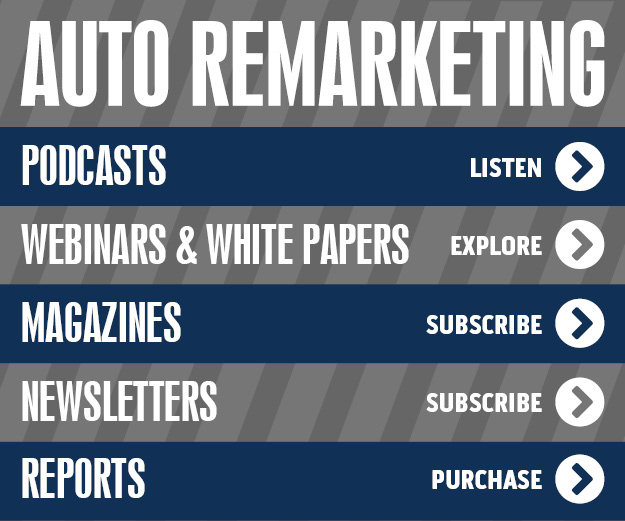Make it 13 quarters in a row during which the average amount consumers had remaining on their vehicle installment contract moved higher year-over-year.
TransUnion's Industry Insights Report indicated that auto loan debt per borrower jumped 4.1 percent from $16,410 in the second quarter of last year to $17,090 in Q2 of this year.
On a quarterly basis, TransUnion reported auto loan debt increased 1.35 percent from $16,862 in the first quarter. TransUnion automotive vice president Peter Turek pointed out that auto loan balances rose in every state year-over-year during the second quarter.
Among the biggest U.S. cities, Houston and Phoenix saw the largest yearly auto loan debt rises of approximately 6 percent. Houston's average auto loan debt increased to $21,690, the highest such number of all major markets.
“The numbers reflect a continued healthy marketplace,” Turek told SubPrime Auto Finance News this week. “There’s competition amongst the manufacturers, auto lenders and dealers. It’s great, healthy competition. I think in the end it benefits all of those stakeholders, especially consumers, the folks who drive those vehicles every day and make the payments.
“What we’re observing is the fact that there is more recent originations,” he continued. “As consumers over the past several quarters have demonstrated, auto sales have been booming and related financing has been booming so we have a lot more auto loans on the books that are recent that have higher balances. That’s what’s driving the higher average balance across all age groups and the industry.
“In addition, when you think about what was going on a couple of years ago, consumers were deleveraging so we were talking about how average balances were going down quarter-over-quarter,” Turek went on to say. “Now we’re in the 13th consecutive quarter where there has been an increase in auto loan debt. I would say that’s primarily from increasing auto sales and more, and more consumers buying automobiles and financing them.”
In a new view of the data, TransUnion also noticed that auto loan debt increases for different age groups remained in a tight range, though changes observed for borrowers ages 40 to 49 were noteworthy. These borrowers saw the largest yearly percentage increase — up more than 5 percent — while also having an average auto loan debt level nearly $1,000 higher than the next age group.
“We’re pleased to offer this slice of data. We think it gives some value around what consumers in different age groups are doing. It’s not really surprising. I think some of it is intuitive. When you think about the ages of people when they’re the most credit active is typically between ages 40 and 60,” Turek said.
TransUnion recorded 62.3 million auto loan accounts as of the second quarter, up from 58.2 million a year earlier. Viewed one quarter in arrears (to ensure all accounts are included in the data), new account originations increased to 6.20 million in the first quarter of this year, up from 5.82 million in the same period last year.
Not Alarmed by Q2 Delinquency Uptick
Auto delinquencies rose slightly in the second quarter because there’s more paper on the streets nowadays, but TransUnion analysts don’t think the trends are necessarily bad for the industry.
According to TransUnion, the auto loan delinquency rate — the ratio of borrowers 60 days or more delinquent on their vehicle installment contracts — increased to 0.95 percent in Q2, up from 0.87 percent a year earlier.
However, TransUnion pointed out that auto delinquencies dropped on a quarterly basis from 1 percent in the first quarter of this year.
Turek explained that the latest delinquency rate remains below the Q2 average of 1.05 percent observed between 2007 and 2014.
Since 2007, Turek noted, the auto loan delinquency rate has reached as high as 1.59 percent (in Q4 2008), while its low was observed in Q2 2012 at 0.86 percent.
"Auto lending remains similar to what we have observed during the last several quarters,” Turek said. “Delinquency rates remain relatively low while auto loan balances keep rising — both metrics aided by increasing auto loan originations.
"In fact, there are 4 million more auto loan accounts in the marketplace than we observed just last year. This means with more auto loans in the marketplace and a delinquency rate ticking higher, we now have several thousand more delinquent accounts than at the midpoint of 2013,” Turek went on to say.
TransUnion indicated that all but six states experienced an increase in their auto loan delinquency rates between Q2 of last year and Q2 of this year. The largest delinquency increases occurred in Alaska, Michigan, Montana and Nebraska.
The largest declines occurred in Hawaii, South Dakota and Oregon.
The subprime delinquency rate (those consumers with a VantageScore 2.0 credit score lower than 641 on a scale of 501-990) increased from 4.12 percent in the second quarter of last year to 4.61 percent in Q2 of this year.
Turek also noted the share of non-prime, higher risk loan originations (with a VantageScore 2.0 credit score lower than 700) grew by 56 basis points (from 33.80 percent in Q1 2013 to 34.36 percent in Q1 2014). This percentage is still lower than what was observed seven years ago near the beginning of the recession (38.98 percent in Q1 2007).
Turek said observers should not read too much into the numbers because “4.61 percent of 1,000 is different than 4.61 percent of 1 million. I’m not suggesting it’s not a reason for concern. But I think when you think about the number of loans that are entering into 30-day delinquency, they’re not flowing through. Even though we still have a low delinquency rate overall, the number of new originations has certainly increased the frequency of delinquency. But we’re not seeing them translate into significant losses.
“As you look at that across the industry, you would interpret that as it’s pretty healthy. People are continuing to buy cars. They’re continuing to finance cars. It seems to be working right now, just in a very healthy way,” he continued.
"It will be interesting to see if lending to the subprime segment of the population continues to grow and what, if any, the impact will be on the overall delinquency rate,” Turek went on to say. “Historically, increased subprime lending pushes the overall delinquency rate higher. This is not necessarily a bad thing for the auto ecosystem — consumers find reliable transportation for work, lenders actively minimize the risk, and dealers sell more cars.”
Auto Finance: A Self-Managing Industry
SubPrime Auto Finance News also gathered Turek’s perspective on what’s been the talk of the summer — a perceived bubble inflating in connection with subprime vehicle financing. Like many other observers, Turek shook off thoughts that subprime auto finance is traveling down the same tracks as mortgages that derailed the economy into the Great Recession.
“When you think about what auto lenders do, they manage risk,” Turek said. “Where we are in the current business cycle we are seeing some tremendous growth since 2010 and 2011. Some of the growth is slowing so auto sales are slowing year-over-year. There’s going to be lenders that adjust where they buy to get more volume. There’s going to be more subprime lenders in the marketplace. And then there’s going to be consumers who feel more comfortable taking on a loan.
“When all of those factors combined come together in terms of the ecosystem, there’s going to be increases in delinquency. What we’re seeing is a return to this healthy competition. Delinquency is still, compared to other periods of time, really low, even in the subprime space,” he continued.
Turek also pointed to how finance companies cater their underwriting and analysis quite different between any auto or mortgage business it might conduct.
“Most of the time a vehicle is a shorter term piece of collateral. It’s not an appreciating asset. It’s a depreciating asset,” Turek said. “There’s a lot of that analysis that goes into the financing of that vehicle. It’s an interesting topic, but when you look at the numbers and peel them back, the industry has a way of self-managing itself when it comes to cost and things that impact the industry.
“When you look back at gas prices spiked, there were some lenders that had a lot of SUVs in their portfolio. They were able to account for those potential loan losses if one of those vehicles went bad because of gas prices or their values went sharply down,” he continued.
“Values and depreciation are priced into the loan,” Turek added. “I really don’t see that there is a subprime bubble. When you look at our data and delinquency, I think we’re returning to pretty healthy numbers.”
Ally Financial launched a new tool this week to help consumers decide whether buying or leasing might be their best option when shopping for a vehicle.
Available for free on Ally’s website, the company explained the interactive buy or lease tool can help arm consumers with the right information to start the vehicle-financing process.
The tool leads consumers through five simple questions on their automotive and driving needs, including how many miles they drive annually, down payments intentions and maintenance, as well as preferences on how long to keep a vehicle.
After completing the questions, Ally indicated consumers will learn which option may best fits their needs — buying, leasing or the Ally Buyer’s Choice product. Consumers can explore additional information on these financing options, or take what they’ve learned and head into the dealership equipped with knowledge on the different choices available.
“Well informed consumers do their research and come armed with a game plan when looking to finance a vehicle,” said Andrea Riley, chief marketing officer of dealer financial services for Ally.
“Knowing what types of options are available before even stepping foot in the dealership can help consumers feel more confident that the decisions they are making are the right ones for their financial situation,” Riley continued.
The interactive tool is available for all consumers on Ally’s website at www.ally.com/auto/personal/explore-financing-options/.
Finance companies’ appetite for subprime risk appears to be waning, judging by the softening trends Experian Automotive shared on Wednesday.
According to its latest State of the Automotive Finance Market report, Experian determined that the percentage of new-vehicle loans to subprime and deep subprime borrowers began to level off in the second quarter.
The percentage of new-vehicle loans going to consumers in the subprime and deep subprime segments was at 15.1 percent in Q2, down from 22.1 percent a year earlier. While analysts pointed out the latest reading is higher than the low at the worst juncture of the recession in 2009 when it was at 10.2 percent, they also said the current figures are still well below the prerecession level highs of 16.6 percent in Q2 of 2008 and 19.9 percent in Q2 of 2007.
The subprime softening also is apparent on the used-vehicle side, too.
Experian indicated the percentage of used-vehicle loans extended to the subprime and deep subprime segments in the quarter settled at 40.2 percent, down from 50.6 percent in Q2 of last year. Again, the figures are up slightly from the 39 percent seen in Q2 2009, but still below the prerecession levels in 2008 and 2007 of 43.4 percent and 46.6 percent, respectively.
Melinda Zabritski, senior director of automotive finance for Experian, examined the figures and shared her thoughts, just like she will do during the opening keynote presentation at the SubPrime Forum, which runs from Nov. 10 through 12 as a part of Used Car Week at the Red Rock Casino, Resort and Spa in Las Vegas.
“Although we’ve seen relative stability in the automotive industry the past several years, lenders are still showing cautionary signs when lending to the subprime market and keeping their risk at manageable levels,” Zabritski said.
“As for consumers, as long as those in these higher risk segments continue to pay their bills on time, keep delinquent balances in check and select a vehicle that fits within their budget, they should still be able to obtain the necessary financing to purchase a vehicle that meets their needs,” she continued.
As subprime volume softened year-over-year, Experian also noticed the amount that borrowers with bruised credit histories also dipped in the second quarter.
The average new-vehicle loan amount to a subprime borrower dropped to $27,347 in Q2 2014 from $27,563 in Q2 of last year, and new loans to deep subprime borrowers fell to $24,836 in Q2 from $25,486 in Q2 a year earlier.
For used vehicles, the average subprime borrower loan fell to $16,546 in Q2 from $17,020 in Q2 of 2013. Used deep subprime loans fell to $14,358 in Q2 from $15,113 in the year-ago quarter.
While those contract amounts are on the way down, Experian also pointed out the average monthly payment for a used vehicle reached an all-time high in the second quarter. That monthly commitment for a used vehicle came in at $355 in Q2, up $4 from a year ago.
“Used-vehicle financing has experienced consistent growth over the last several years,” Zabritski said.
“As we continue to see the price of vehicles reach new heights, more and more consumers, especially those that are credit challenged, are turning to the used vehicle market as a viable option to purchase their next car,” she went on say.
While not a record, Experian also noted that the average monthly payment for a new vehicle increased, too. The second-quarter average moved up by $10 to $467/
Experian also highlighted several other trends from the its Q2 data, including
• Of all new vehicles sold in Q2 2014, leases accounted for a record high 25.6 percent, up from 23.4 percent the previous year.
• The interest rate for a new vehicle was up from 4.46 percent in Q2 of 2013 to 4.59 percent in Q2 of 2014.
• Used vehicle interest rates were up from 8.56 percent in Q2 of 2013 to 8.82 percent in Q2 of 2014.
• The average credit score for a new vehicle loan in Q2 of 2014 was 711, up from 699 a year earlier.
• The average credit score for a new vehicle lease rose to 717 in Q2 of 2014 from 706 in Q2 of 2013.
Autobytel now has a solution site officials insist is an easy-to-use car payment conversion tool for dealer websites that’s powered by DriveItNow.
Autobytel’s Payment Pro can provide online shoppers with instant and customized monthly payment options based on individual credit and inventory eligibility, while delivering pre-qualified leads direct to dealers.
Officials explained how Payment Pro is designed to work:
1. When consumers visit a dealer's desktop or mobile website and click on the Payment Pro button, they're provided with real-time payment information for any of the vehicles in the dealer's inventory.
2. Once shoppers complete the general information form — no Social Security information or birth date is required — the Payment Pro system determines credit eligibility and then instantly displays customized monthly car payment options based on the customer's specific criteria.
3. Payment Pro then delivers the customer's credit eligibility and desired payment information in the form of a first-party lead direct to the dealer.
“When consumers are given upfront information to determine what they can afford on a monthly basis, dealers can be more flexible with pricing and negotiation,” said Phil DuPree, president of dealer services for Autobytel.
“Customers are immediately engaged, haggling decreases and time wasted on showing consumers cars they can't afford is avoided,” DuPree continued. “Payment Pro makes car buying easier for consumers while delivering pre-qualified leads straight from a dealer's website to his showroom.”
DuPree mentioned Payment Pro can offer dealers a variety of additional benefits, including higher quality customer prospects and conversion rates, and the ability for dealers to set their own prices and financing terms instead of engaging in competitive pricing wars that can drive down profit margins.
“The great part about Payment Pro is that it complements the Autobytel mobile website products we offer dealers, and can be easily integrated into a dealer's mobile strategy,” DuPree said.
The technology behind Payment Pro is powered by DriveItNow.
“The team at Autobytel invented online car buying and selling so they understand, more than anyone, the necessary ingredients for successful online automotive sales,” DriveItNow president Tarry Shebesta said.
“Giving dealers the ability to quote customized car payment options upfront saves time, enhances engagement, and increases conversions,” Shebesta continued. “The end result is Autobytel's ability to deliver real-time, pre-qualified leads to dealers straight from their very own websites."
Payment Pro is available immediately for dealer desktop and mobile sites. To learn more, visit http://www.paymentprodemo.com, or contact an Autobytel sales representative at (866) 589-5498.
As CNW Research noticed both sequential and year-over-year increases in approvals for subprime vehicle financing so far this month, two Equifax economists took their turn to again reiterate how a bubble is not forming in that segment, contrary to the connection some observers are making to the mortgage meltdown.
In a white paper released on Monday, Equifax explained the three critical components to the bubble formation in the mortgage space going into the recession. Those elements included:
— Rising asset prices (home prices) fueled speculation in residential real estate.
— New-home construction was at all-time high for a sustained period and exceeded population growth.
— The share of mortgages originated to subprime credit borrowers was rising at a time when home purchases were at record levels.
Equifax chief economist Amy Crews Cutts and deputy chief economist Dennis Carlson pointed out in the white paper that as the number of borrowers who were well-qualified to finance a home purchase did not rise in tandem, the credit bubble was fueled by inappropriate lending, which in turn fed the asset bubble.
“While there are always key differences in the housing market compared to the auto market, including housing as a potentially appreciating asset versus an auto that is likely a depreciating asset, the Equifax expert acknowledged there are some similarities in factors that indicate some “effervescence” such as quickly rising sales of new vehicle and an even faster rate of increase in auto lending.
“But looking closely at those similar factors, we see that the auto market of today is just now recovering to pre-recession levels and, unlike the mortgage market immediately prior to the recession, the auto market was not in the same frenzied state at that time,” said Crews Cutts and Carlson, who noted that new-vehicle sales reached their peak level in the first quarter of 2000 and averaged 16.96 million units for the six-year period ending December 2005.
Crews Cutts and Carlson began their white paper titled, “Not Yesterday’s Subprime Auto Loan,” by reiterating the importance subprime financing is to the future of consumers who have damaged credit profiles. The Equifax economists noted the positive consumer ramifications well known to finance company executives at institutions that specialize in subprime contracts such as the importance of quality transportation to enhance employment opportunities and how steady payment performance can possibly lead to a rise toward prime status.
“If a borrower with subprime credit obtains a loan from a financial institution that reports the complete payment histories of their clients to the national credit reporting agencies, and that borrower makes timely payments on that loan and other credit obligations, then over time that borrower’s credit score will likely improve, possibly enough to qualify for prime credit terms,” Crews Cutts and Carlson said.
“If, however, the subprime-score borrowers are precluded from mainstream sources of credit, it becomes more difficult for those borrowers to improve their credit scores,” they continued. “Auto financing in the subprime segment adds to the benefits by enabling credit-worthy consumers to obtain reliable transportation and acquire a valuable, albeit depreciating, asset.”
Adding to the importance and value of subprime auto financing, Crews Cutts and Carlson emphasized that the lending landscape today is not the same as it was in 2007 when experts contend the economy ran into its worst tailspin since the Great Depression.
“Lending in the heyday of the credit boom often greatly underweighted any consideration of credit worthiness outside of a credit score. However, credit scores are predicated on lending underwriting standards being maintained as they were during the reference period used to create them — that is, they explicitly assume that lenders will verify the collateral, capital, and capacity of borrowers just as they always have,” the Equifax economists said.
“Lending has returned to the ‘good old days,’ both because lenders generally have a reduced appetite for risk and because regulatory scrutiny has increased,” they continued. “Specifically, in the subprime auto lending segment most lenders are now verifying incomes today on all loans.
“Given this, loans originated with a 620 credit score today are likely to perform very differently from loans originated with a 620 credit score in 2007, when the loans were likely granted without full underwriting,” Crews Cutts and Carlson went on to say.
And CNW’s data showed the modest increases the industry is currently generating. According to the firm’s August issue of its Retail Automotive Summary, subprime contract approvals are up 5.18 percent in August compared to July and 9.91 percent higher versus the same month last year.
Equifax closed its white paper by pointing out that subprime vehicle financing needs to be monitored carefully, especially given the risk finance companies take providing loans to borrowers in the subprime space.
“The evidence does not support that there is a bubble forming in the auto lending space,” Crews Cutts and Carlson said “It is also beneficial to consider than an unmet need is being satisfied.
“Assuming originations and loan performance in the space remain as they are today, this may benefit the overall economy, as well as the individual participants, in the long run,” they added.
The complete white paper from Equifax is available here.
While advocacy groups and federal regulators continue to be skeptical of the convenience and value dealers present at the F&I office, new data from Edmunds.com is showing the volume of work completed in that store department is climbing to levels never previously seen.
Edmunds.com determined only about 23 percent of buyers in July completed a purchase either with cash or financing arranged on their own as opposed to the remaining 77 percent that included some kind of indirect financing orchestrated at the dealership.
Analysts indicated last month’s trend is on track to be the lowest level ever, and down from about 35 percent just five years ago.
"You can't underestimate how important dealer financing has been to this automotive recovery,” Edmunds.com senior analyst Jessica Caldwell said.
The latest auto loan figures back up Caldwell’s declaration. As previously reported here by SubPrime Auto Finance News, Equifax computed that the total outstanding auto loan balance as of June topped $900 billion for the first time.
“What’s great is we continue to see the momentum. Each month, we continue to see it grow and get stronger. It’s a really positive sign for the car market in general. Growing balances will continue to feed healthy growth for the next three to five years,” said Jennifer Reid, the senior director of product marketing at Equifax Automotive Services.
That growth expectation now and down the line isn’t just coming from prime borrowers, either. CNW Research pointed out that the number of subprime buyers in July rose by a “substantial” amount. CNW pinpointed the jump at 25.5 percent versus the same month a year ago.
And growth in deep subprime — borrowers with credit bureau scores below 550 — expanded by nearly the same rate in July, too. CNW indicated the amount of deep subprime borrowers climbed by 23.6 percent year-over-year.
Perhaps at least aiding in that growth — and aiding in profits for both the dealer and finance company — is the work being completed in the F&I office.
“When you think about more than three-quarters of people are at the dealership getting some sort of financial package, it just seems it’s totally changed from the mindset of a long time ago where you saved money and put down a big down payment,” Caldwell said.
“It seems like there are so many people who buy on monthly payment that the dealer works out for them, whether it’s a lease or financing,” she continued. “People just work within their budget saying, ‘OK, that monthly payment works for me.’ That’s why you see so much happen at the dealership rather people checking their own bank or credit union, thinking about how much they can afford before going into the dealership.
“I think (completing financing at the dealership) is a convenience factor, but I also think it’s also sometimes what drives the purchase decision. Some of these offers are so great whether it’s leasing or financing. It can really make or break the deal. Not only is it a matter of convenience, getting your transaction done all in one place, it’s also financially advantageous for people,” Caldwell went on to say.
A new kind of subprime borrower is starting to influence the statistics gathered by Equifax.
Jennifer Reid, the senior director of product marketing at Equifax Automotive Services, acknowledged that dealers and finance companies typically think of subprime consumers as ones with delinquencies, defaults and bankruptcies.
But Reid pointed to the slight uptick in subprime vehicle leasing in April that potentially was booked through special captive finance company programs geared to recent college graduates who might be carrying student loan debt and need the flexibility of a manageable monthly payment.
“When you start charting subprime, you normally just think of 640 and below,” Reid told SubPrime Auto Finance News during a recent phone interview. “But on the retail side, you’ve got to start to think about what’s making up those numbers. They’re not necessarily the subprime customers who have a lot of delinquencies or issues from the past. You’ve got a lot of special captives targeting that younger, first-time college graduates. It may be just someone with a thinner file or no credit. You’ve got a lot of college graduates with special programs out there.”
According to a recent study by the Federal Reserve Bank of Cleveland, analysts cited data from the Consumer Financial Protection Bureau, which estimated that student loans outstanding currently total about $1.2 trillion. That figure is spread among 40 million borrowers, or an average debt of nearly $30,000 per student.
Despite that large amount of debt that’s required to be repaid to federal outlets and cannot be discharged through bankruptcy, Ann Marie Wiersch pointed toward the positives of the situation. Wiersch is a senior policy analyst at the Federal Reserve Bank of Cleveland.
“The range of debt burden varies tremendously from student to student, though many of the graduates with the heaviest debt burden land high-income professional jobs — doctors or attorneys, for example — that put them in a strong position to repay the debt,” Wiersch wrote in a research study posted earlier this year.
“Experts believe that a majority of student loan defaults are concentrated among those who did not complete their education — their default rates are four times higher than those of graduates,” Wiersch continued. “This is not surprising, since many of these dropouts, unlike graduates, are no better able to repay than they were before enrolling.”
Even if these consumers complete their degree, the challenge of finding gainful employment is another element complicating the situation for these potential borrowers, according to Reid. She expects underwriting departments to see more applications arrive with student loan debt registering as a significant part of the background being brought into the situation.
“I think it’s a discussion you’re going to see more of, especially in the next couple of years, and the impact it’s going to have on that demographic getting vehicles,” Reid said. “When you’ve got high loan debt coupled with high unemployment, and they need a car, that equation doesn’t always work well together. That’s definitely going to be a discussion going forward especially with so many vehicles in the next 10 years expected to be sold in that segment.
“On the dealer side as well, they’re going to have to get more comfortable with working with that demographic of customers to have those conversations about having the right vehicle to meet the needs of that demographic,” she continued.
Topics that are going to influence the vehicle financing industry both long-term and in the immediate future such as student loan debt are going to be highlighted throughout the second annual SubPrime Forum, which is again a part of Used Car Week. The SubPrime Forum, orchestrated in conjunction with the National Automotive Finance Association, will have keynote presentations and panel discussions covering subjects such as originations, compliance and more.
“Dealers and lenders are educating themselves and getting more information,” said Reid, part of the Equifax team who will be joined by other SubPrime Forum speakers from firms such as Black Book Lender Solutions, Hudson Cook and Dealertrack Technologies.
“There’s a lot of questions being asked. There’s quite a bit of dialogue happening. As an entire industry, we’re all talking about the changing environment because it’s changing so rapidly,” Reid continued.
“I think it’s very promising to see everyone coming together to talk through some of the challenges that are already here or are on the horizon. They’re recognizing the momentum and trying to find ways to keep it,” she went on to say.
The SubPrime Forum is scheduled for Nov. 11 and 12 at the Red Rock Casino, Resort & Spa in Las Vegas.
For more details about the SubPrime Forum as well as the opportunity for registration discounts, go to subprime.autoremarketing.com.
In an attempt to increase consumer convenience and reduce payment processing costs, Southern Auto Finance Company (SAFCo) recently selected the UP Bill Payment Solution from ACI Worldwide.
Now, SAFCo customers will be able to pay their vehicle loans electronically on a mobile device, computer or via phone with a debit card or ACH (Automated Clearing House). These customers will also have the option to sign up for an ongoing electronic bill payment relationship or to make their loan payment quickly with no sign-up required.
After conducting a broad vendor evaluation, SAFCo chose ACI’s comprehensive and integrated electronic bill payment solution.
“As a finance company, payments are our lifeblood,” SAFCo chief financial officer Gary Stein said. “ACI’s electronic bill payment technology gives us a competitive advantage by providing our customers the easiest and most flexible ways to make their loan payments, resulting in both operational efficiencies and significant cost savings for SAFCo and our customers.”
Richard Crone, chief executive officer of Crone Consulting, explained why it’s important for finance companies such as SAFCo to be flexible in how it takes payments. SAFCo currently operates in 14 states.
“As big banks and regional auto lenders compete for market share, providing convenient bill payment options can increase customer satisfaction, loyalty and future purchase intent,” Crone said. “We see increasing demand from consumers to pay from mobile devices and with debit cards.
“Today’s lenders must not only offer these options, but also the ability for consumers to pay quickly without having to sign up for online banking,” he continued. “Many banks have more than 50 percent of their loans with customers who do not have a checking account at their respective banks, yet banks do not offer electronic payment options for this customer segment.”
With that situation in mind, ACI Worldwide vice president and product line manager Scott Fitzgerald emphasized the value the UP Bill Payment Solution is designed to bring to SAFCo and other finance companies.
“SAFCo recognizes the importance of catering to the wide range of consumer preferences in order to win and retain business,” Fitzgerald said.
“We’re seeing forward-thinking consumer finance organizations expand their flexible bill payment options to include mobile and debit cards,” he continued. “These capabilities provide consumers fast and convenient payment options that make it easier to do business with loan providers.”
Beyond the metrics about originations, collections and other figures associated with vehicle financing, the 2014 member survey orchestrated by the National Automotive Finance Association highlighted just how important Millennials are to the present and future of the industry.
During his presentation at the 18th annual Non-Prime Auto Financing Conference, George Halloran discussed at length this new crop of consumers, individuals who are comfortable handling just about any part of their financial lives through the Internet at just about any time of the day. Halloran is the auto finance program director at Benchmark Consulting International, which assembled the survey for the NAF Association again this year.
“I think it’s very much on the minds of all finance sources because what we see is the younger generation, if they’re not shopping, they show up with mom or dad or grandma and grandpa,” Halloran said. “The dealerships are becoming much more connected to this kind of shopping. And the finance source similarly is becoming much more connected because these people want to shop when they want to shop. They want products and services available on their schedule with complete information and transparency.
“It’s kind of like if they wake up at 2 in the morning, eat a Snickers, drink a Red Bull and decide they want to buy a car, they want to do it right then,” he continued. “They want to find their financing then so you have to be online with your offers and processes so they can go to them and almost get to the point of pre-approval.
“In the non-prime market, it’s a little tougher, but that’s what they’re looking for. And the younger shoppers are shopping sometimes not for themselves,” Halloran went on to say.
The dialogue about Millennials that started again at the conference and now continues isn’t something new per se, according to Halloran. During other presentations at NAF Association events, he said the topic of Millennials came up, but now it’s even more pressing since this demographic appears to represent a much larger piece of the potential buying pool.
“I don’t think it’s too much of a culture shock, but it has been something they’ve been monitoring for years,” Halloran said. “It’s an evolution. Right now finance companies are serving two types of marketplaces. Those who are not Millennials, and those who are.
“They might not be actual customers yet, but they have a huge impact on the actual customer in terms of how they operate and the tools they use and information channels they use,” he continued.
Halloran made two other points about how finance companies must approach Millennials.
“These people are very social in the way they define social, which means they want what they want when they want it, and it has to be available in a fully transparent way,” he said.
“They’re not particularly price sensitive. They’re not necessarily shopping for the best price,” Halloran continued. “Their shopping revolves around more of what they want and what they can afford. If they think they can afford something, they’re not just going to look for the lowest price around. If they find something that’s acceptable — that’s what it means to be social to them — that’s the implication in terms of pricing and availability.”
Revamped Study Produces Enhanced Results
The NAF Association included metrics from the past two years in its latest study because officials took a one-year hiatus to revamp the survey process with their partner, BenchMark Consulting International. The association meshed together some of its long-standing analysis with new material provided by Experian Automotive and FactorTrust.
The new product resulted in the NAF Association and its members being able to identify nearly a half dozen challenges that are either new or have been presented but intensified in the past couple of years.
To reinforce the validity of its process, orchestrators pointed out that 77 percent of companies that participated are repeat contributors. The total accounts for the 22 finance companies that completed the survey surpassed 1.2 million, up 5 percent from two years ago when the last survey was compiled. The outstanding balances within the portfolios of the participants exceeded $10 billion, up 10 percent from the previous installment.
The 22 finance companies that participated included:
— AFS Acceptance
— Anderson Brothers Bank
— Automobile Acceptance Corp.
— Chase Auto Finance
— Crescent Bank & Trust
— FIFSG/First Investors Financial Services
— Foursight
— Gateway Financial Solutions
— MarkOne Holdings
— MPH2 Funding
— Nationwide Acceptance Corp.
— PFS Corp.
— Prestige Financial Services
— Regional Acceptance Corp.
— Security National Automotive Acceptance
— Southern Auto Finance
— Summit Financial Corp.
— Tidewater Finance Co.
— Top Finance Co.
— Turner Acceptance
— United Finance
— Westlake Financial Services
“A year and half ago, we decided that the survey questions that were being asked and the report we produced, the information was available from other sources,” NAF Association executive director Jack Tracey said. “We made a conscientious effort to try to find out what the marketplace wanted to know. We then built the survey form we’re using today to gather information so we could produce more relevant information that would be useful and not necessarily available anywhere else.
On top of that we brought in Experian and FactorTrust with their information stratified into just the non-prime markets. We feel now that we’re getting a broader overview of the industry, and the details we are providing hopefully will be some metrics to help manage their organizations,” he continued.
Highlights of Conference
One of the largest crowds ever attended this year’s NAF Association Non-Prime Auto Financing Conference, pushed in part by the presence of the Consumer Financial Protection Bureau.
“I think it went very well. The feedback has been almost universally favorable,” Tracey said. “People think we really raised the bar this year on what we provided to the people in attendance.
“It was just a good event. It challenges me to keep the conference as interesting as we need it to be,” he continued. “With the CFPB out there doing things, it’s not hard to come up with items that people are concerned about.”
The event started with a Q-and-A session only for NAF Association members with Jeffrey Langer and Eric Reusch, who both are in the Office of Installment and Liquidity Credit Markets with the CFPB. Later a select group had the opportunity to have a lunchtime discussion with both of the CFPB officials who shared their perspective on the regulatory requirements the bureau is asking of finance companies.
“The CPFB people were very pleased with the opportunity to answer the questions the NAF members asked,” Tracey said. “Our people were extremely pleased with the exchange of information, getting a real appreciation for what the CFPB is trying to do.”
The conference included presentations from Sandy Schwartz and Tom Webb from Manheim, Amy Martin from Standard & Poor’s and Steve Chaouki from TransUnion.
Tracey shared one other element he noticed that made this year’s conference unique.
“We had a lot more funders than we’ve had in the past, which is an indication that the market is hot. There’s a lot of money out there,” Tracey said. “You could conclude that there is a lot of money in the marketplace chasing deals so there is a lot of pressure on the finance companies to lower rates or take riskier transactions in order to get the money on the street.
“Generally, those dynamics when there is a lot of money flowing into the market and the competition increases and there is a need for volume, we’ve reached the peak of the cycle and some of the negatives in the marketplace — delinquencies, losses, repos — those trends start to take over,” he continued. “Then, the market slows down a bit because people become spooked.
“The funders are there, and that’s good. But it also creates an environment that people need to be cautious of,” Tracey added.
A new survey by RateWatch, a banking data and analytics service owned by TheStreet, showed how many consumers are still unaware there are possible opportunities to refinance their vehicle purchase to a lower interest rate than the one set in the initial contract.
Survey orchestrators found that many consumers overlook or are not interested in refinancing their auto loans. Some of the specific results included:
— 27 percent of respondents did not know that refinancing their auto loan was an option.
— 59 percent of respondents knew that refinancing was an option but chose not to refinance.
— Participants ages 30 to 44 were most likely to be aware of auto refinancing options, but only 20 percent had taken advantage of them.
Survey results also showed borrowers who have owned their vehicle for five or more years were most likely to have known refinancing was an option and follow through with a refinance.
But more than half of those who have owned their vehicles for less than five years were not aware refinancing was an option.
“Auto-loan refinancing tends to be somewhat uncommon and it’s unfortunate since consumers can save thousands of dollars in the course of paying off their loan,” said Ross Kenneth Urken, personal finance editor for TheStreet. “It’s a technique more consumers need to recognize as beneficial to their finances.”
The survey also revealed that consumers are paying off their loans with varying interest rates:
— Customers who have owned their vehicle for two through less than five years are most likely to have an interest rate of 2 percent to less than 3 percent.
— The percentage of respondents paying an interest rate between 1 percent and 2 percent is the same as the percentage of respondents paying an interest rate of 8 percent or greater, demonstrating the large range of available rates.
Orchestrators explained this survey aimed to understand the behaviors and preferences of consumers regarding their current loans and future loan plans. Survey responses were obtained through a third party service with questions distributed March 28 to March 30, 2014 to consumers ages 18 and older throughout the United States.
The firm obtained 608 total unique responses with 527 having completed the full survey.












